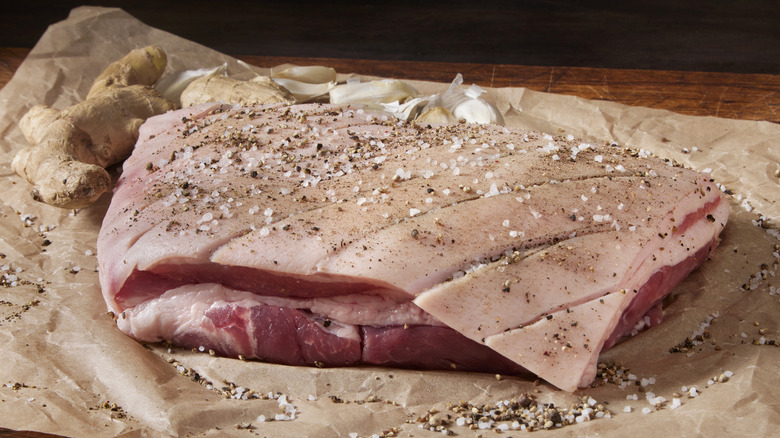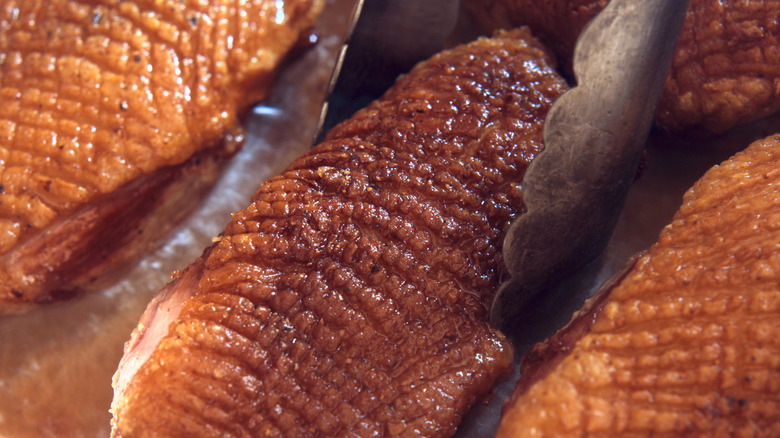When To Score Meat For Better Texture And Flavor
Scoring meat is a great way to improve its texture and flavor, but when should you do it? Not every cut benefits from this trick, but for some, it's indispensable. Firstly, you'll want to score if you're working with anything that has a high amount of fat trapped under the skin, like duck or pork belly. Not only does scoring increase the surface area of the skin — creating more of that delicious brown crust — but it also helps to let excess fat escape. Keeping the fat trapped in may make the meat greasy and soggy.
A few shallow cuts, scored onto the skin in a crosshatch or checkerboard pattern, also creates little nooks and crannies that capture spices and seasonings. Your protein's exterior will practically burst with flavor. Scoring may also yield plenty of rendered fat as it leaks out of the meat and collects in your cooking vessel. You can save it and use it in recipes like duck fat refried beans.
Additionally, scoring tough seafood like squid, especially if you plan to cook it over high heat, breaks down the muscle fibers. This makes the protein more tender and allows more marinade to soak in. Plus, scoring a thin pork chop or slice of fish means that the fat and skin won't contract around the flesh as it cooks, so it stays nice and flat. As beneficial as scoring is, you have to do it right — luckily, all you'll need is a sharp knife and a little knowledge.
How to score meat
The key to scoring meat lies in the depth of the cuts. Cut it too shallow, and excess fat won't escape the skin, seasonings won't stick as well, and the meat may end up curled and tough. Too deep, and you'll ruin the texture of the meat, making it dry or causing it to fall apart.
Before you start cutting, sharpen your knife using a plate or a dedicated sharpener if you have one, as dull blades aren't precise enough to score properly. Take your knife and slice diagonal lines across the surface of the meat. Each slice should penetrate the skin and fat cap, but never cut into the muscle itself (unless you're working with no-skin, no-fat cuts like squid). Turn your protein 90 degrees and repeat the process, creating a crosshatch pattern. It helps to do this right after you take the meat out of the fridge, as it will be firmer and easier to cut with no slipping.
Making more cuts to create a smaller crosshatch will produce a crispier crust, and "sweat" out more fat. If you're in a rush and just want the fat to escape, you don't have to make a checkerboard pattern. Simply slice a few evenly-spaced lines in the skin. Examine the meat closely — if you can see the color of the flesh through your cuts, you're going too deep. If you cut too far, the meat might lose some juice when it cooks, so try a basic marinade recipe to add some extra moisture back in.


